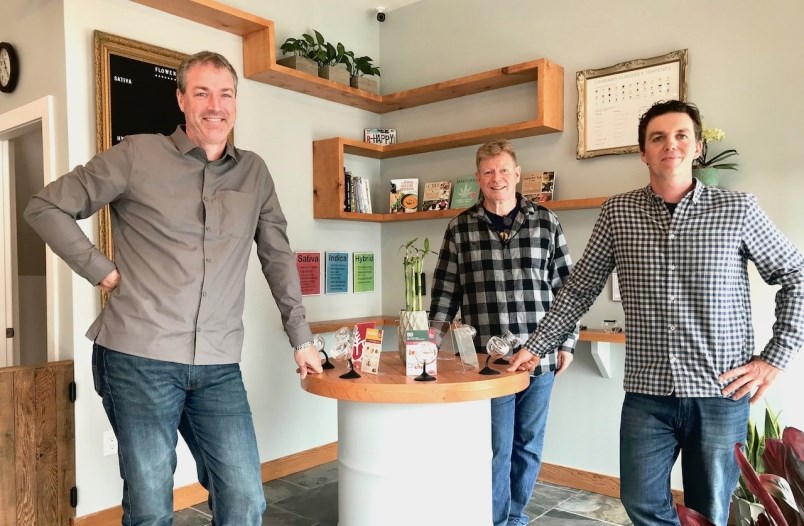Briefs from the Sept. 28 Bowen Island Municipality regular council meeting:
In the time-honoured tradition of trying to pass a steep slopes bylaw during a term, this council is taking its kick at the can.
Bowen Island Municipality is developing two parallel pieces of legislation: a hazardous areas development permit area and a site alteration bylaw.
“Together these would seek to address risks to people and the environment that are proposed by larger scale development and site preparation activities,” said BIM planner Jennifer Rae Pierce at the Sept. 28 regular council meeting. “So these are activities that occur before a person typically would come to us for a development permit or a building permit.”
The first piece, a hazardous areas development permit area, would use detailed mapping from the province, accessed through the Islands Trust, to designate areas vulnerable to earthquake, fire, rockfall, treefall, landslide, erosion and runoff. Any significant development in these areas (the bylaw would define what’s considered “significant”) would have to come to BIM for a permit before proceeding.
(Under a steep slopes bylaw developed in 2011 there was to be a blanket DVP requirement on slopes with a grade of 30 per cent or more. It didn’t pass. The DVP areas under the new regulations are to be more refined said Pierce.)
The site alteration bylaw, on the other hand, would see large scale development anywhere on island (not just in hazard areas) before council prior to proceeding.
“[It’s] triggered by the magnitude of the work, rather than by the area of the work,” said Pierce, “generally measured in volume of disturbance or area of land.”
The idea is to not impede locals’ everyday work but to catch more major endeavours––such as preparing lots for construction––before they happen. It’s not uncommon for a site to be prepared for work, including blasting and clearing, before a building permit comes in said Pierce (which is the way the building permits work she added). “At that point, it’s not really something that can be put back,” she said.
Identifying what types of activities increase risks to “water contamination, groundwater lowering, ground instability, soil runoff, drought or other hazards” is part of the BIM workplan.
The year-long workplan for developing and implementing the two bylaws approved at Monday’s council meeting estimates a cost of $8,800. While the hazardous areas DPA development will require technical expertise, BIM is hoping to take advantage of a university work program to employ a graduate student, bringing the cost down significantly.
Councillors voiced general support for the workplan. Coun. Sue Ellen Fast noted she was glad to see public engagement built into the plan. Coun. Alison Morse noted that defining hazards would be important to the success of the bylaw (she was on council for the 2011 failed bylaw).
Coun. Maureen Nicholson was the sole vote against passing the work plan. Her reasoning was that council has a strategic planning session coming up and it would be good to see what projects are underway and what projects could conceivably be done by term’s end two years from now.
Keeping up the cannabis: Happy Isle Cannabis Company is applying for a rezoning to allow for a non-medical cannabis retail unit.
In anticipation of the federal government legalizing marijuana in 2018, BIM adopted a bylaw prohibiting the cultivation, production, packaging, storage, distribution, trading, or selling of cannabis in the municipality. Farm use, medical purposes and the four personal plants allowed under federal legislation are exceptions. The understanding was that should anyone want sell or cultivate cannabis they could apply for a temporary use permit or rezoning, giving the municipality more control over where dispenseries can be located.
Happy Isle got its TUP in 2018 and opened in May 2019. The TUP is to expire in 2021.
“Review of comments from BIM Bylaw Services and RCMP have expressed no concerns and found no evidence of complaints or any calls of concern from the neighbourhood during the entire duration of this company at this location,” said a BIM staff report.
Councillors voted unanimously to direct staff to prepare a rezoning bylaw.
Emmitting a plan: An update to BIM’s Community Energy and Emissions Plan (CEEP) is in the works.
The first plan in 2016 “has guided BIM’s climate action from 2017 to present” said a staff report and the update is to guide the following five years.
Actions related to the previous CEEP plan listed in the report include the on-island composting feasibility study, multi-use pathway progress (though none’s been built outside of the cove to date), site alteration bylaw in the works, Land Use Bylaw updates in the works, conservation development policy in the works, adoption of step three of the STEP code (comes into effect Oct. 1) and adoption of the climate action strategy.
The plan is to cost $15,000 with half covered by BC Hydro and the other half taken from the Carbon Initiatives Reserves Fund.
The plan is to incorporate emissions data and analysis, initiatives, components of the climate action strategy and other relevant policies and plans.
Water grants: Council authorized staff to apply for an infrastructure grant to connect the municipal Eagle Cliff Water System and the Cove Bay Water System. Director of Engineering Patrick Grant said it would likely be fall 2021 they’d find out if the application was successful or not with construction going into 2022.
Slowing down: The speed limits bylaw passed adoption, legally setting the speed limit across the island at 40 km/hr except where otherwise noted.
Watch the entire meeting:



